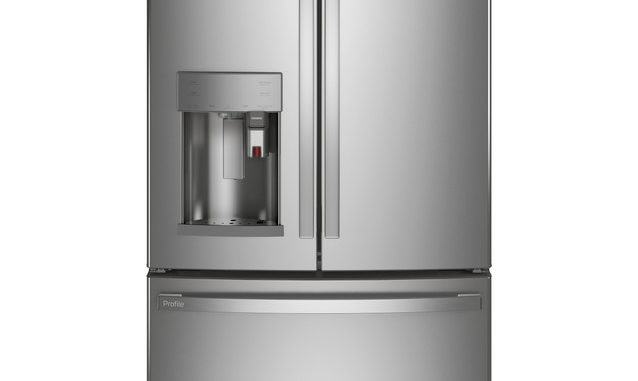
Last week I bought a refrigerator. What was once a fairly easy buying decision can now be a lot more complicated thanks to feature creep and the inability to see many models on showroom floors.
The one I bought has Wi-Fi, but as it turns out, that wasn’t part of my buying decision once I realized how little utility is actually added.
For me, shopping involved visiting a couple of small appliance stores and a couple of big box stores, including Home Depot and Costco. The small stores and Home Depot had several models on display while Costco had very few. But the models at the other stores didn’t even begin to represent the range of options. When I asked a salesperson at Home Depot about things that mattered to me, he took me over to his computer and showed me options from the same website that I could visit from home.
One of the smaller stores I visited had a GE Profile 27.9 Cu. Ft. Smart Fingerprint Resistant 4-Door French-Door Refrigerator with Door In Door for $3,000. And that was the “sale price.” The full price, according to GE’s website is $4,200. We didn’t care about the “door in door” feature (which lets you open a door to access a couple of bins without having to open up one of the main doors) and, despite my being a techie, I wasn’t impressed with their “smart” features. Still, we liked the refrigerator but didn’t want to pay that much.
As a general rule, I don’t like to take unfair advantage of small retailers by viewing a product on their floor and buying it elsewhere, and I’m even willing to pay a bit more for the convenience of buying locally. But there’s a limit. Factoring in a sale price, a $300 rebate and Costco’s 2% “reward” for executive members, I was able save $600 by buying that refrigerator from Costco.com.
As I said, there were features on this device that I didn’t need and there were similar refrigerators without those features on various websites that I could have purchased for quite a bit less. But none of those other options were on display locally, and the pictures, descriptions and videos are no match for seeing a display unit. Even though Costco.com and other online retailers are willing to take returns, I didn’t want to put myself or the delivery crews through that much hassle, let alone the environmental impact of shipping and delivering such a large and heavy item. So, we wound up buying the model we saw on display.
As I said, I feel a bit guilty about buying it online after viewing it at a local store, and I worry that this type of behavior is partially responsible for the demise of local merchants. But I’m not sure how this can be resolved. For local merchants, floor space is a precious commodity, and there are only so many models they can have on display. I also understand how hard it is for them to match or beat the prices of online or big box merchants.
Pros and cons of online shopping
The internet makes it possible to advertise a great many more options but has the downside of not letting you see and touch the actual item. I have bought much smaller things online based on their description and then returned them if they didn’t meet my expectations.
When shopping online for appliances or other large items, you can usually learn a bit from the manufacturer’s website, but I was able to learn quite a bit more from YouTube videos, often by individuals who bought a unit, retailers or reviewers. It’s still no substitute for seeing the unit in person, but it’s often a lot better than simply reading a description or viewing photos.
Waste of Wi-Fi
So the new refrigerator is now chilling food in our kitchen, and because it came with W-iFi, I downloaded the app. It has a couple of slightly useful features like sending you a message if the door is left open and letting you know when it’s time to replace the filter. It also lets you set the temperature of the main refrigerator, the “convenience drawer” and the freezer, but there’s rarely a need to do this remotely. Unfortunately, it won’t tell you the actual temperature, which would be handy if you’re worried about food spoilage, so I wound up buying separate thermometers for the fridge and freezer.
This isn’t my only appliance with Wi-Fi. I also have a smart microwave, induction stove and air fryer, as well as a portable air conditioner, some air purifiers and several space heaters. The Wi-Fi on the heaters and air conditioners is because it lets me check the temperature and control the devices remotely by setting up a schedule. It’s especially nice in the bedroom where I can adjust the heat or AC without getting out of bed. I also find it useful to check indoor air quality from my phone. But I almost never use the Wi-Fi on my stove, oven and microwave because there’s little you can do with them without being near the appliance.
Larry Magid is a tech journalist and internet safety activist.